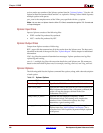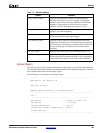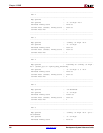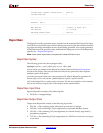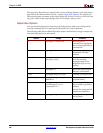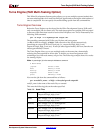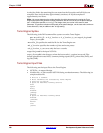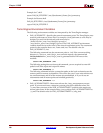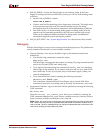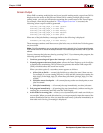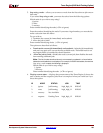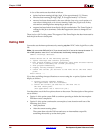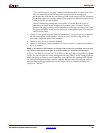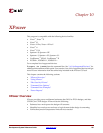
190 www.xilinx.com Development System Reference Guide
Chapter 9: PAR
R
Example for C shell:
setenv PAR_M_SETUPFILE /net/${nodename}/home/jim/parmsetup
Example for Bourne shell:
PAR_M_SETUPFILE=/net/${nodename}/home/jim/parmsetup
export PAR_M_SETUPFILE
Turns Engine Environment Variables
The following environment variables are interpreted by the Turns Engine manager.
• PAR_AUTOMNTPT—Specifies the network automount point. The Turns Engine uses
network path names to access files. For example, a local path name to a file may be
designs/cpu.ncd, but the network path name may be
/home/machine_name/ivan/designs/cpu.ncd or
/net/machine_name/ivan/designs/cpu.ncd. The PAR_AUTOMNT environment
variable should be set to the value of the network automount point. The automount
points for the examples above are /home and /net. The default value for
PAR_AUTOMNT is /net.
The following command sets the automount point to /nfs. If the current working
directory is /usr/user_name/design_name on node mynode, the command cd
/nfs/mynode/usr/user_name/design_name is generated before PAR runs on the
machine.
setenv PAR_AUTOMNTPT /nfs
The following setting does not issue a cd command; you are required to enter full
paths for all of the input and output file names.
setenv PAR_AUTOMNTPT ""
The following command tells the system that paths on the local workstation are the
same as paths on remote workstations. This can be the case if your network does not
use an automounter and all of the mounts are standardized, or if you do use an
automounter and all mount points are handled generically.
setenv PAR_AUTOMNTPT "/"
• PAR_AUTOMNTTMPPT—Most networks use the /tmp_mnt temporary mount
point. If your network uses a temporary mount point with a different name, like
/t_mnt, then you must set the PAR_AUTOMNTTMPPT variable to the temporary
mount point name. In the example above you would set PAR_AUTOMNTTMPPT to
/t_mnt. The default value for PAR_AUTOMNTTMPPT is /tmp_mnt.



